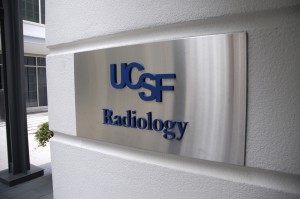Spearheading Strategies and Protocols to Reduce CT Scan Risks
 The risks of CT scan radiation and ways to reduce those risks have been making headlines for more than a year, following admissions last fall by Cedars-Sinai Medical Center that it had mistakenly overdosed more than 200 patients during CT scans, giving some patients doses equivalent to 50,000 chest X-rays, according to a recent ABC news story. The Department of Radiology at UCSF has been at the forefront of the controversy bringing both physicians and patients information on possible risks, an understanding of the benefits of CT scans, and also spearheading strategies to reduce CT scan risks.
The risks of CT scan radiation and ways to reduce those risks have been making headlines for more than a year, following admissions last fall by Cedars-Sinai Medical Center that it had mistakenly overdosed more than 200 patients during CT scans, giving some patients doses equivalent to 50,000 chest X-rays, according to a recent ABC news story. The Department of Radiology at UCSF has been at the forefront of the controversy bringing both physicians and patients information on possible risks, an understanding of the benefits of CT scans, and also spearheading strategies to reduce CT scan risks.
Among the steps the Department of Radiology at UCSF has taken are:
• Consultation with referring physicians to relative benefits of tests that may or may not involve radiation, and encouraging tests such as ultrasound or MRI that do not involve radiation.
• All radiology devices are calibrated and tested annually and quarterly maintenance is done on all.
• All CT protocols are tailored to use the minimum amount of radiation required to provide diagnostic quality images, and updated continuously to minimize dose reduction.
• We are currently investing in advanced CT hardware and software across our installed base that produces images of comparable quality while reducing radiation dose by 30-50 percent. A recent study showed we have reduced radiation dose for CT of the brain by 30 percent with this technology.
• Special low dose protocols have been developed for use during specific CT guided procedures. The China Basin Imaging Center has reduced by 80 percent in the last year by using a special low dose CT “step and shoot” mechanism during CT guided spinal procedures.
More information on these steps and the many others the radiology department at UCSF is taking to provide leadership in radiation safety can be found on our patient safety page of our website.
